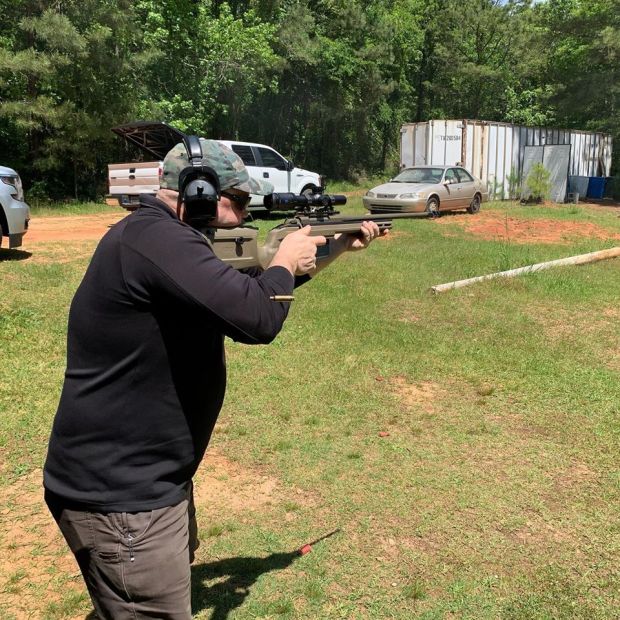Well, 10 months have passed since I wrote the first installment of Down the Practical Hole. It was a fun exercise, but ultimately, I convinced myself that my original conclusion was correct and that the AR platform is the most practical platform currently available. In fact, I picked up a brand x upper in 6.5 Grendel for use in critter getting. The smart play would be to stick with what I have, but much like Henry Fonda wanting that fourth carrier (shame be upon those not getting the reference), I still find myself wanting a turn bolt rifle.
It didn’t help matters that somebody who brought his latest practical rifle project to the range this past week…

Erik Lund of AllFire Dynamics shooting his practical project rifle
It’s only fair as I got him started down this path with my ramblings.
With the aforementioned 6.5 Grendel upper in hand, my thoughts have wandered to the Ruger American Ranch rifle in 5.56 caliber. The reason for this consideration is the straight-up compatibility with AR mags and ammo. With 10-round mags, it would be legal in most states but scavenged mags could be used in a pinch (pandemic thoughts, you know). Heavier ammo, such as the Barnes 70 grain TSX rounds would give it more punch; however, I concede that it wouldn’t be as much punch as originally desired. I’m still annoyed that the rifle isn’t available with a compact stock from the factory.

Ruger American Ranch
Then again, along comes an interesting contender in the Remington 700 CP:

While it probably doesn’t have the reach as initially envisioned, it is intriguing. For now, the beat goes on.